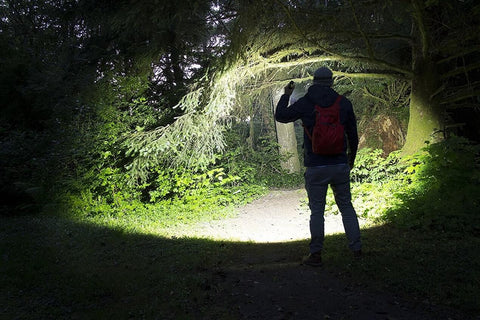on all orders over $150
on all orders over $150

The flashlight models that are in the market today have made remarkable progress over those that existed in the past, as is the case with most technology related products. Advances in LED technology and battery efficiency have led to flashlights that are smaller in size, lighter and brighter than in previous years. The main parts that usually make up a flashlight are the following:
Since 2009, the ANSI FL1 standard has ensured that flashlight models are tested and calibrated in the same way. Compliance with this standard is optional and manufacturers make their own tests, but most now include the following performance data in their packaging:
Brightness
It is measured in lumens. It is the unit of measurement of the intensity of light coming out of the flashlight. A multi-function flashlight uses different lumens in each (eg high-light mode, energy-saving mode, etc.). The lumens can range from a low number (eg 20 lumens, ideal for reading a book) to about 3500 (almost daylight).
Beam distance
It is measured in meters. It is how far the light will travel before it begins to decay to the same extent as the full moon. This distance varies depending on the brightness setting you selected.
Duration
It is measured in hours. It is how long the light lasts until it is reduced to 10% of rated power (with new batteries), rounded to the nearest quarter of an hour. Light intensity may decrease gradually over time or remain steadily strong for a while and decrease suddenly. The operating time is usually indicated for each of the flashlight adjustment options.
Shock resistance
The flashlights are tested by casting them 6 times on a hard surface. This test is mainly done to ensure that the flashlight remains operational after occasional accidental throws. This test, however, does not mean that the flashlight will withstand any heavy object, or use it to hit other objects.
Water resistance
It is rated with the IPX system. Water resistance is important when using the flashlight in the rain or around a source. There are three ratings: IPX4, IPX7 and IPX8.